Dances We Teach
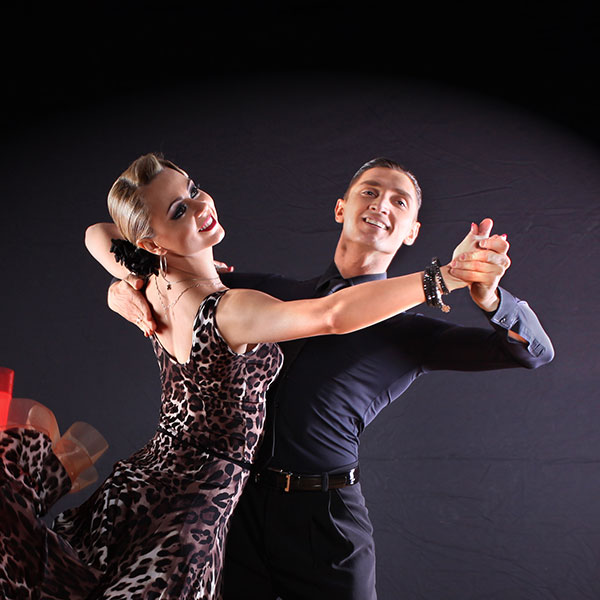
The Waltz
The Waltz, from the Italian word “volver,” meaning turn or revolve, is a romantic dance categorized by its signature rise & fall, and sway movement. The feet keep contact with the floor, creating the signature graceful gliding look. This ONE-two-three patterned dance will practice concepts essential to experiencing the pure joy of International Ballroom Dance.
Listen to Waltz Samples
The Tango
This dramatic dance is accented by strong, almost cat-like staccato movements. Born in Buenos Aires in the 19th century and becoming popular in the United States right before World War I, the tango embodies the strength and romance between two people. Characterized by a close hold that is more compact than other smooth dances, the tango is as exciting to dance as it is to view.
Listen to Tango Samples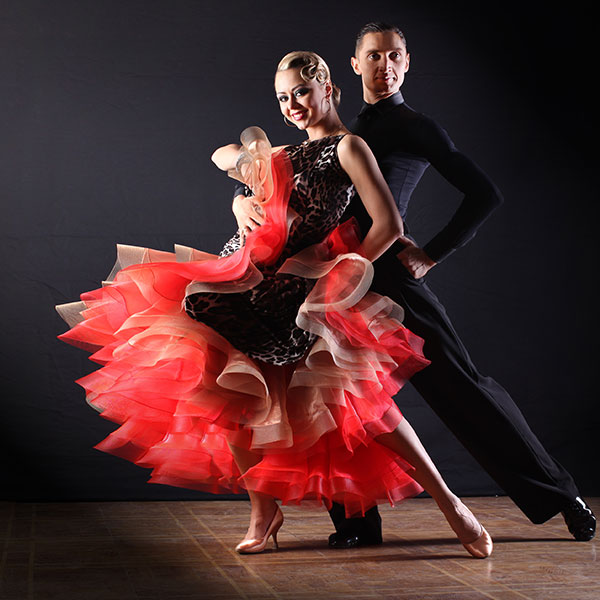
The Foxtrot
Associated with 20th century ragtime or big band music, this smooth, progressive dance is characterized by its controlled movement and easy-going look. The Foxtrot is a classic dance that will enable a dancer to transform as they learn to control their feet while developing the leg, knee, and ankle strength needed to master this dance.
Listen to Foxtrot Samples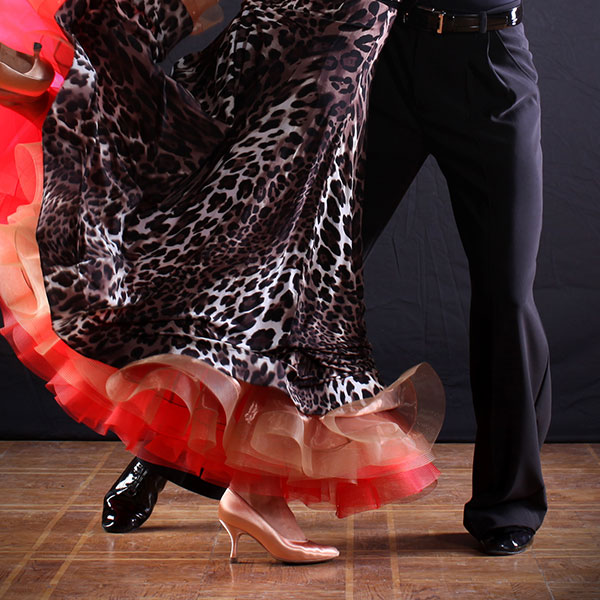
The Viennese Waltz
Much like the Waltz, the Viennese Waltz is characterized by its rise & fall and sway movements, but is significantly faster in tempo than the Waltz. The increase in tempo began in 1787 when the Waltz began to appear on operatic stages and composers began to increase the number of measures per minute in their pieces. There’s an air of magic to this dance as the elegance and turns flow into a delightful pattern. The Viennese Waltz requires more technique and endurance but is a flurry of fun to dance.
Listen to Viennese Waltz Samples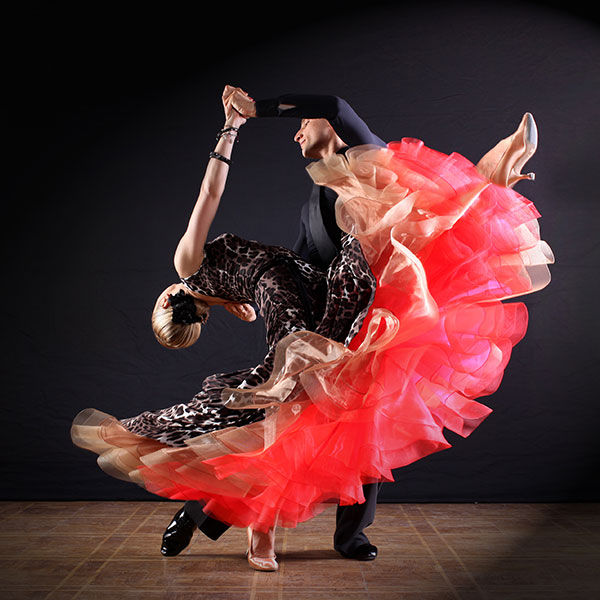
The Quickstep
Originating from the Foxtrot, the Quickstep is the whimsical favorite of all experienced dancers. Incorporating the characteristic Charleston and Foxtrot moves with aspects of the Waltz, and pairing them with a quicker tempo, the Quickstep has been described as “a dance that can never grow stale, a dance that is unquestionably the most attractive expression of rhythm the world has ever known.”
Listen to Quickstep Samples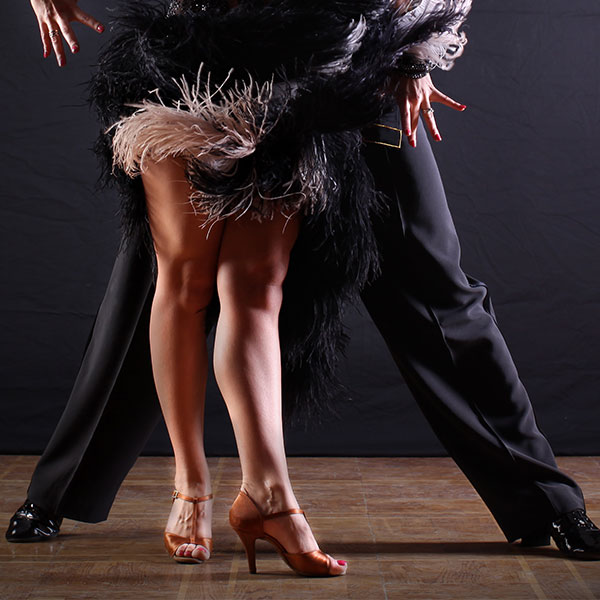
The Cha Cha
Developing it’s name from the sound of women’s shoes shuffling across the dance floor, the Cha Cha is a fun and lively rhythmic Latin dance. Featuring short staccato actions, exciting patterns, and rhythm changes, the Cha Cha is among the most well-known Latin dances and gives you the opportunity to cut loose and show your true personality.
Listen to Cha Cha Samples
The Rumba
This romantic Latin dance will sharpen your muscular control, timing, and sense of rhythm. With Afro-Cuban roots and called “the dance of love,” this dance pulls it’s movements from the Cha Cha but with a slower rhythm than the Cha Cha, it gives the dancers a chance to develop the hip action called Cuban Motion.
Listen to Rumba Samples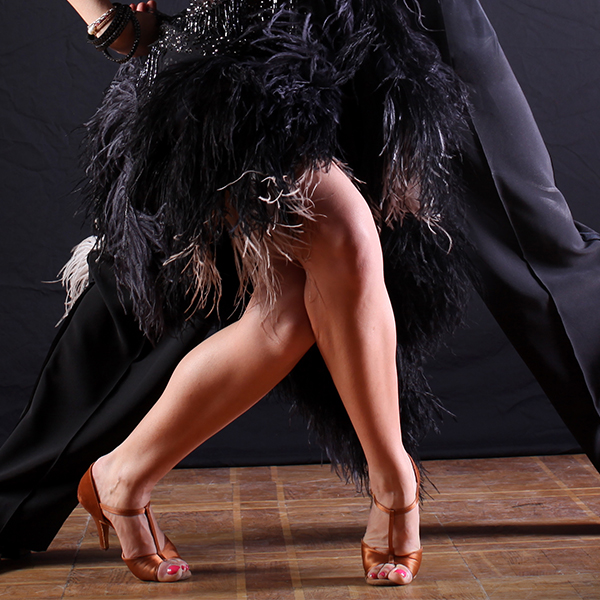
The East Coast Swing
Created in 1940s by taming down the movements of the Lindy Hop, East Coast Swing is a versatile, entertaining, and fun dance to learn. The dance has been featured in many 1930’s movies, such as Way Out West and many John Wayne movies, which contribute to its rise in popularity. Beginners will learn a “1, 2, rock step” motion and as you advance, you will learn more of the triple step. The biggest way to succeed in the East Coast Swing is to enjoy the music, love the dance, and have fun!
Listen to East Coast Swing Samples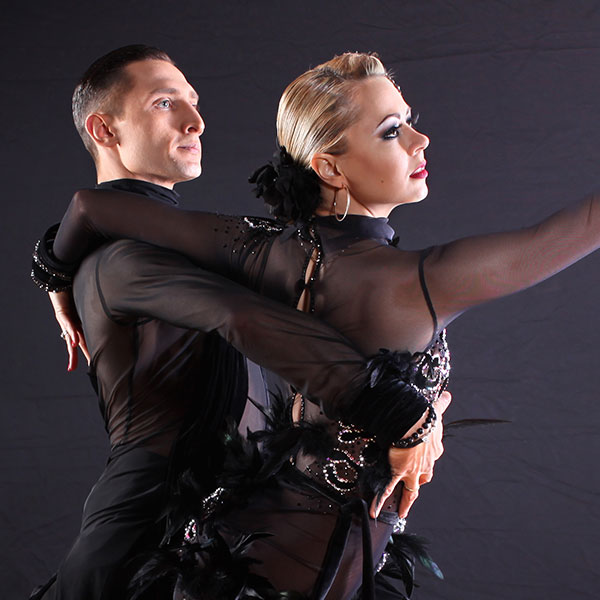
The Bolero
The Bolero is a Spanish dance with Moroccan roots and is thought to have origins resembling the Rumba. One of the most romantic of the Latin dances, the Bolero is characterized by long, sweeping side steps, graceful turns, and dramatic arm movements. It is fun to learn to dance the Bolero because of the rhythms and the dreamy Spanish music.
Listen to Bolero Samples
The Mambo
The Mambo originated from the Cuban dance Danzon. This high-energy, fast-paced Latin dance is characterized by strong Cuban motion, staccato movement and exciting swivels and spins. Set to stirring Afro-Cuban beats, the crisp leg actions and flirtatious interactions with your partner make this a fun and spicy dance to learn.
Listen to Mambo Samples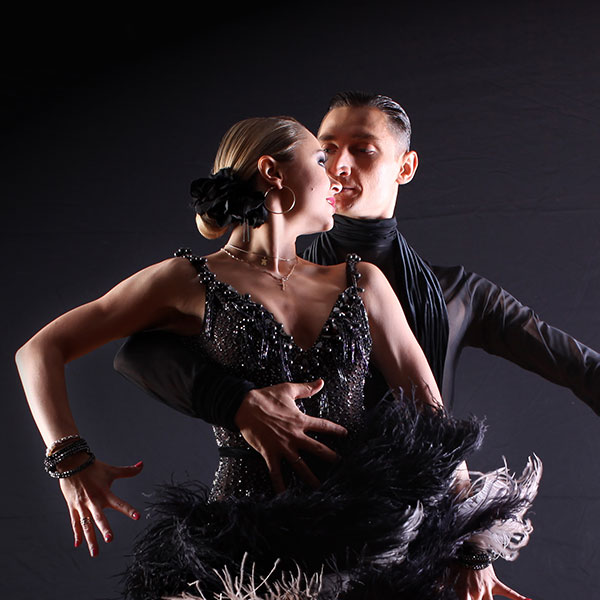
The Samba
Originally a solo dance, the Samba was performed on Brazilian plantations with rapid movement of the hips and quick transfers of weight. At the time, Samba music was an oral history. The Samba was standardized as a partner ballroom dance in the U.S. in 1956. An upbeat, lively dance that progresses counter-clockwise around the floor, the Samba is characterized by its bounce and rolling hip action.
Listen to Samba Samples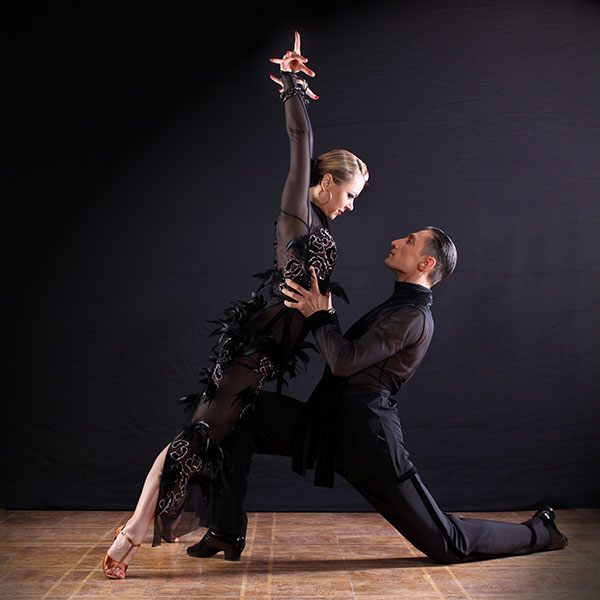
The Paso Doble
The Paso Doble is a dramatic dance featuring sharp, staccato movements, flamenco-style footwork, and dramatic body poses. The dance is from Spanish and French origins, based on a Spanish matador and his cape and named for the French military march “Paso Redoble.” With it’s marching 2/4 beat, the Paso Doble was coined “dance of the master” and is considered a dance that teaches discipline and a little artistic freedom.
Listen to Paso Doble Samples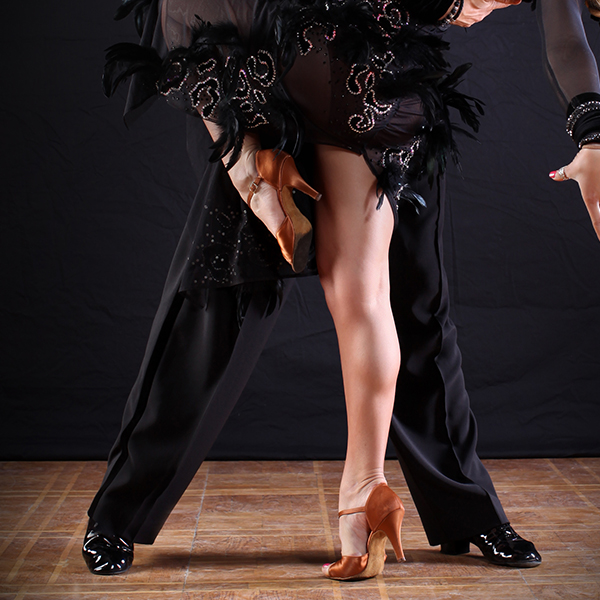
The Jive
The Jive is another dance derived from the Lindy Hop. Including a high lift of the knees, upbeat step patterns, and a swinging hip motion, the Jive is usually danced to a faster and highly syncopated rhythm, exemplified by up-beat swing music or some contemporary music. This fun dance was possibly named from the phrase “they’re just jiving,” meaning they’re just fooling around, being mistaken for the name of the dance.
Listen to Jive Samples
The West Coast Swing
West Coast Swing is a fun dance to learn because of its improvisational style of dancing. The lady or follower can even “lead” on occasion! This “slotted” dance, meaning the follower travels back and forward along a straight line, was possibly developed in Hollywood because wide angled lenses hadn’t been invented yet. West Coast Swing can be danced conservatively in an up-right posture, or with a little bit more funky and wild flare.
Listen to West Coast Swing Samples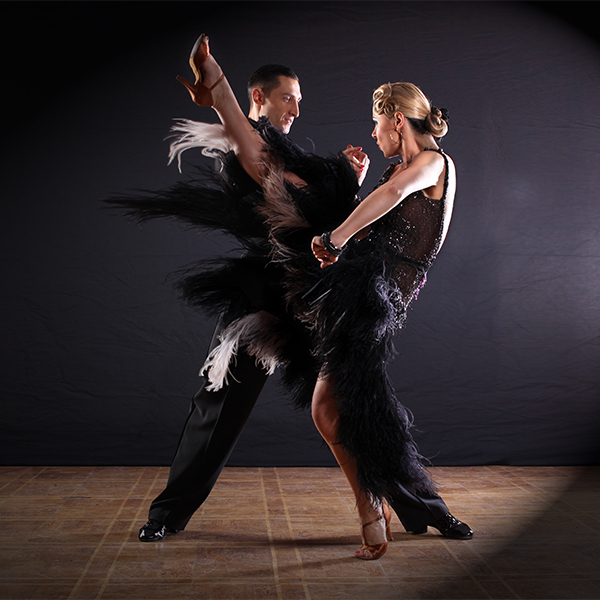
The Charleston
Most recognized by it’s characteristic kick-steps, twisting feet, and roaring 20’s vibe, the Charleston became popular after it appeared in a Broadway musical. Named after the port city in South Carolina, the Charleston was once banned in music halls for it’s loud and boisterous nature. The modern Charleston is still characterized by it’s kicking steps and swinging arms and is a joy to teach, learn and dance!
Listen to Charleston Samples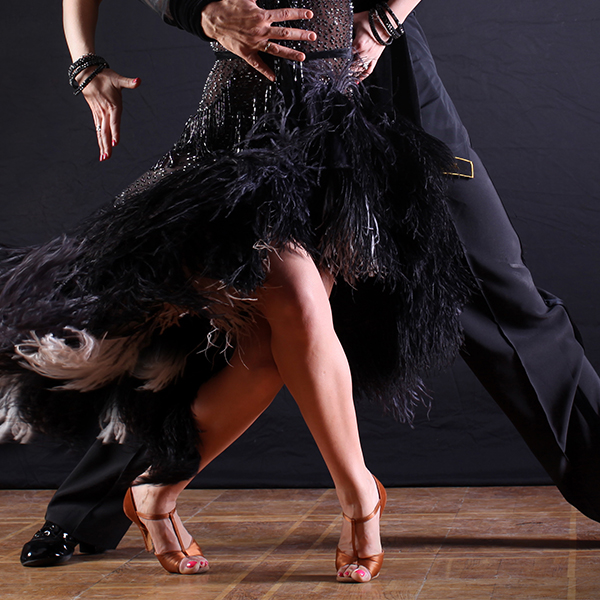
The Lindy Hop
The Lindy Hop is referred to as the “original” swing dance, pulling influence from the Charleston and Tap dances, and influencing many other forms of dance. Beginning in 1920’s and 30s in Harlem, the Lindy Hop became popular because a night out dancing was fun and hearing Jazz music by Ellington, Calloway, and Basie was cheap. The upbeat and fun nature of the Lindy Hop has allowed it to continue to be extremely popular throughout the world.
Listen to Lindy Hop Samples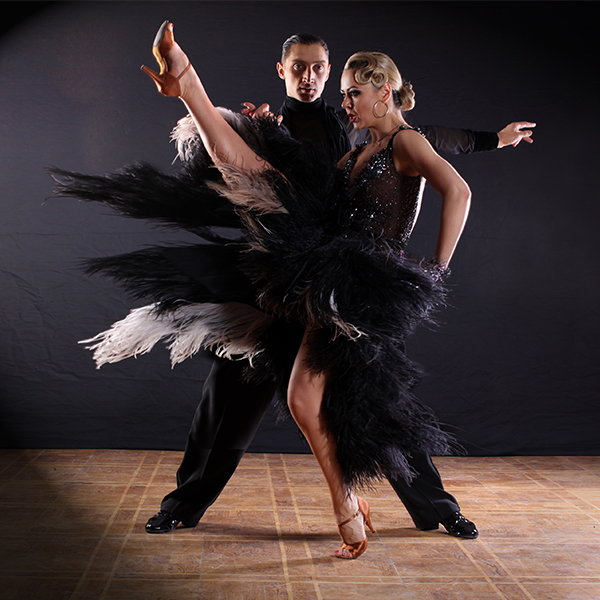
The Jitterbug
The Jitterbug is aptly named in association with the “out of control” movements that characterize general swing dancing. Incorporating elements of the Lindy Hop, East Coast Swing, West Coast Swing, Charleston, Shag, Jive and Balboa, the Jitterbug was highly popular in the African American community and in Harlem nightclubs in New York City. Today, the Jitterbug is celebrated all over the world as a true social dance staple.
Listen to Jitterbug Samples
The Salsa
Salsa, meaning “sauce,” is a spicy dance that is meant to convey enlivening the moment. Considered the most popular of the Latin dances, the Salsa is the easiest to learn and is great for all ages and levels of dancers. With it’s freedom of turning actions and elaborate arm patterns, the Salsa dance is even popular in the nightclub scene because it can fit onto a crowded dance floor without losing its energy or flare. What a fun dance to learn!
Listen to Salsa Samples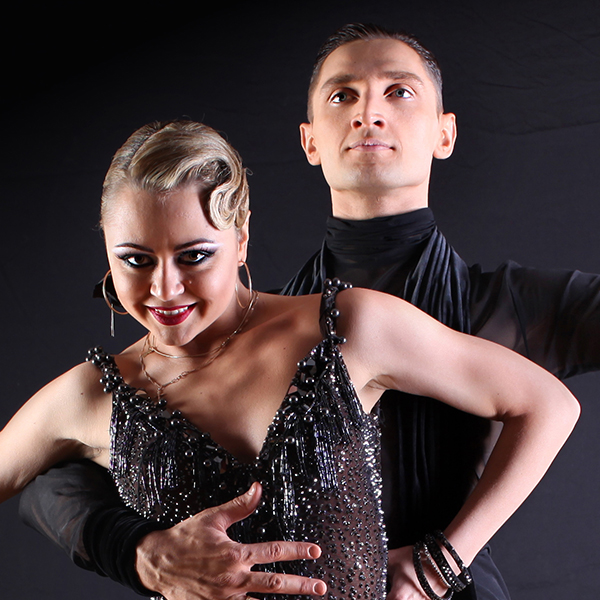
The Bachata
The word “bachata” means “party” and was originally used to describe the spontaneous pop-up parties in Santo Domingo in the Dominican Republic. This Latin dance with a tropical, Caribbean flare is danced to music that incorporates heavy electric guitar and is danced with soft hip motions and side-to-side footwork. Modern Bachata is said to have originated in Spain and fuses the traditional Caribbean aspects with characteristics of Salsa, Tango, Ballroom, and some Hop-Hop.
Listen to Bachata Samples
The Merengue
The Merengue is thought to have gotten its name from the word “Meringue” due to the light and simple nature of the dance, very similar to the dessert made of egg whites. Considered the Dominican Republic’s national dance, it is a fusion of African and European cultures. The Merengue is a very easy dance to learn because of its marching beat and walking and side-to-side steps. This vibrant dance allows for more freedom in creating fun patterns on the floor, making it one of the more popular dances in the U.S.
Listen to Merengue Samples
The Cumbia
The Cumbia is a Colombian dance originating as a courtship dance between young men and women dressed in mostly white. The dance was performed with the notion of a man trying to win over a woman. Mostly a group dance, the Cumbia begins with couples or individuals in a circle and moving inward toward the center of the circle in turns. The steps follow the rhythm of the beats in a 4/4 time.
Listen to Cumbia Samples
The Hustle
This popular disco-era dance originated in the 1970’s night clubs. Originally a line dance, the Hustle began to evolve into a partner dance as more people became involved. The Hustle had many Latin influences, and was called the Spanish Hustle, prior to the release of Saturday Night Fever. Turns, spins, and wraps performed to music with a strong bass beat makes for an exciting and upbeat partner dance. A timeless classic, you’re sure to love performing this dance.
Listen to Hustle Samples
The Nightclub Two Step
The Nightclub Two Step was developed by Buddy Schwimmer in the 1960s as a way to popularize slow ballads. Perfect for a nightclub, wedding, or party dancing, the Nightclub Two Step is a great way for dancers to go beyond the simple slow dance. It is popular with wedding couples because of the romantic, slow, and relaxed vibe. The dance is popular with country music fans as well because of the emphasis on the second beat like most Western Swing, but at a slower tempo.
Listen to Nightclub Two Step Samples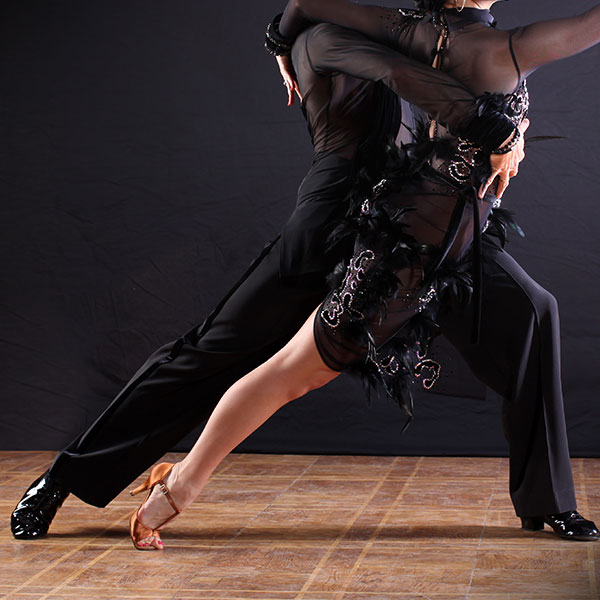
The Argentine Tango
The Argentine Tango is an elegant and sophisticated dance based on the Ballroom Tango, but more suited for intimate spaces with a focus on rhythms and connections. It is believed that the Argentine Tango began in the late 1800s when African slaves were brought to Argentina and influenced its culture. It began as a dance for the poor barrios, but eventually was excepted by the elite. The Argentine Tango is a delight to dance and be danced in any setting.
Listen to Argentine Tango Samples
The Polka
The hops, skips and turns of the Polka paired with the lively and joyful dance music of the same name make this dance a pleasure to learn. Named from the Czech word “pulka” meaning “half-step,” this dance was the second closed position couples dance to be introduced to the world. The dance is performed to typical Polka music in 2/4 time, typically structured around 4 verses and a chorus, making the Polka dance like a story.
Listen to Polka Samples